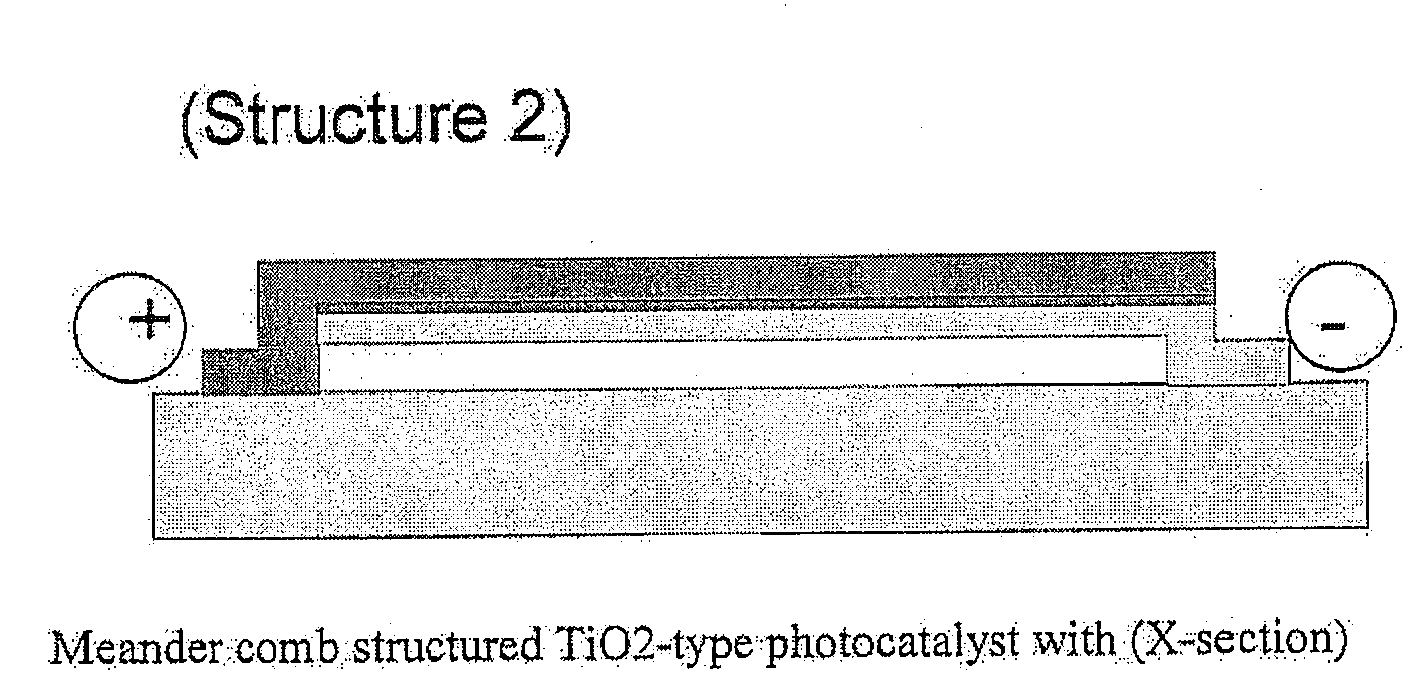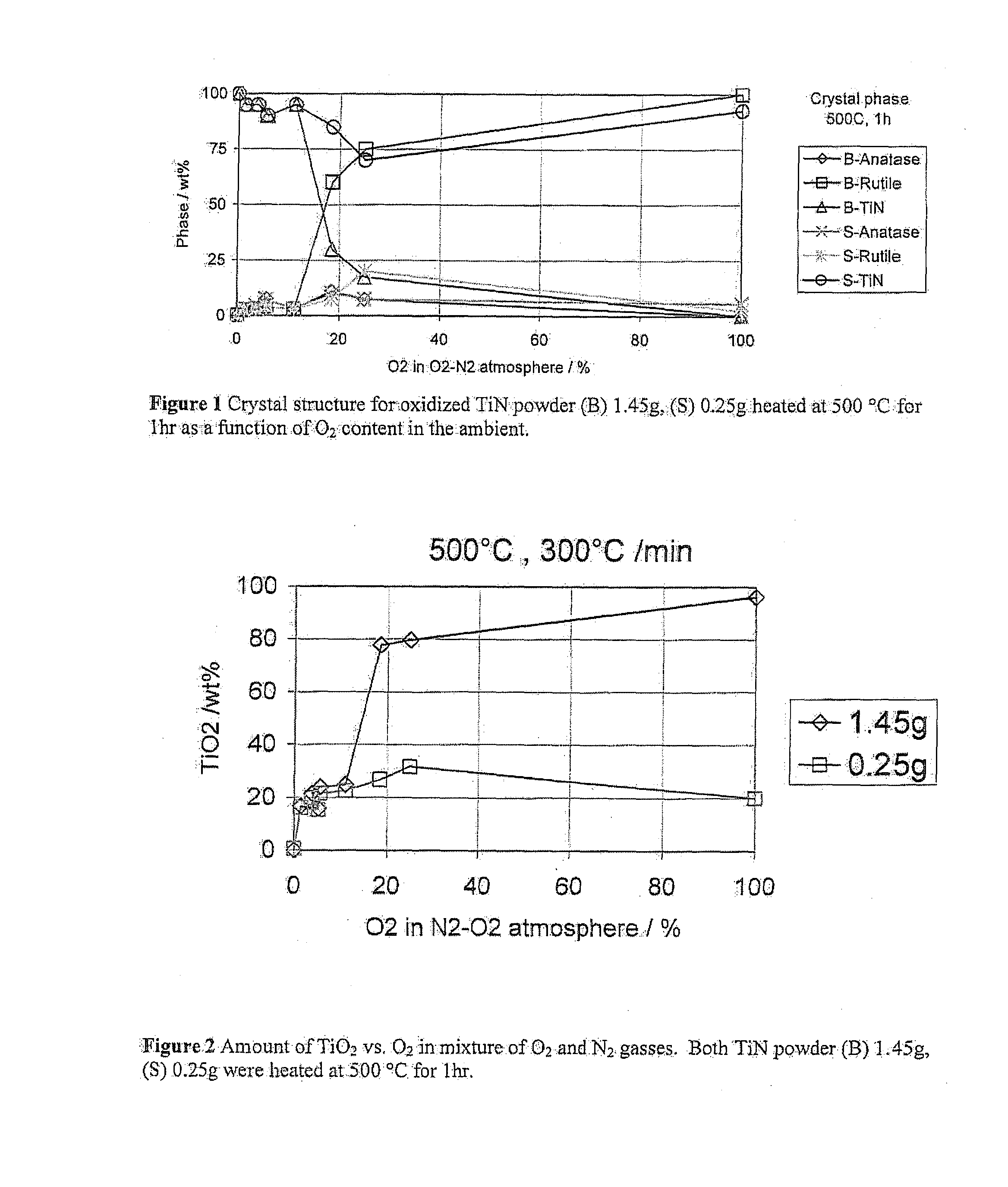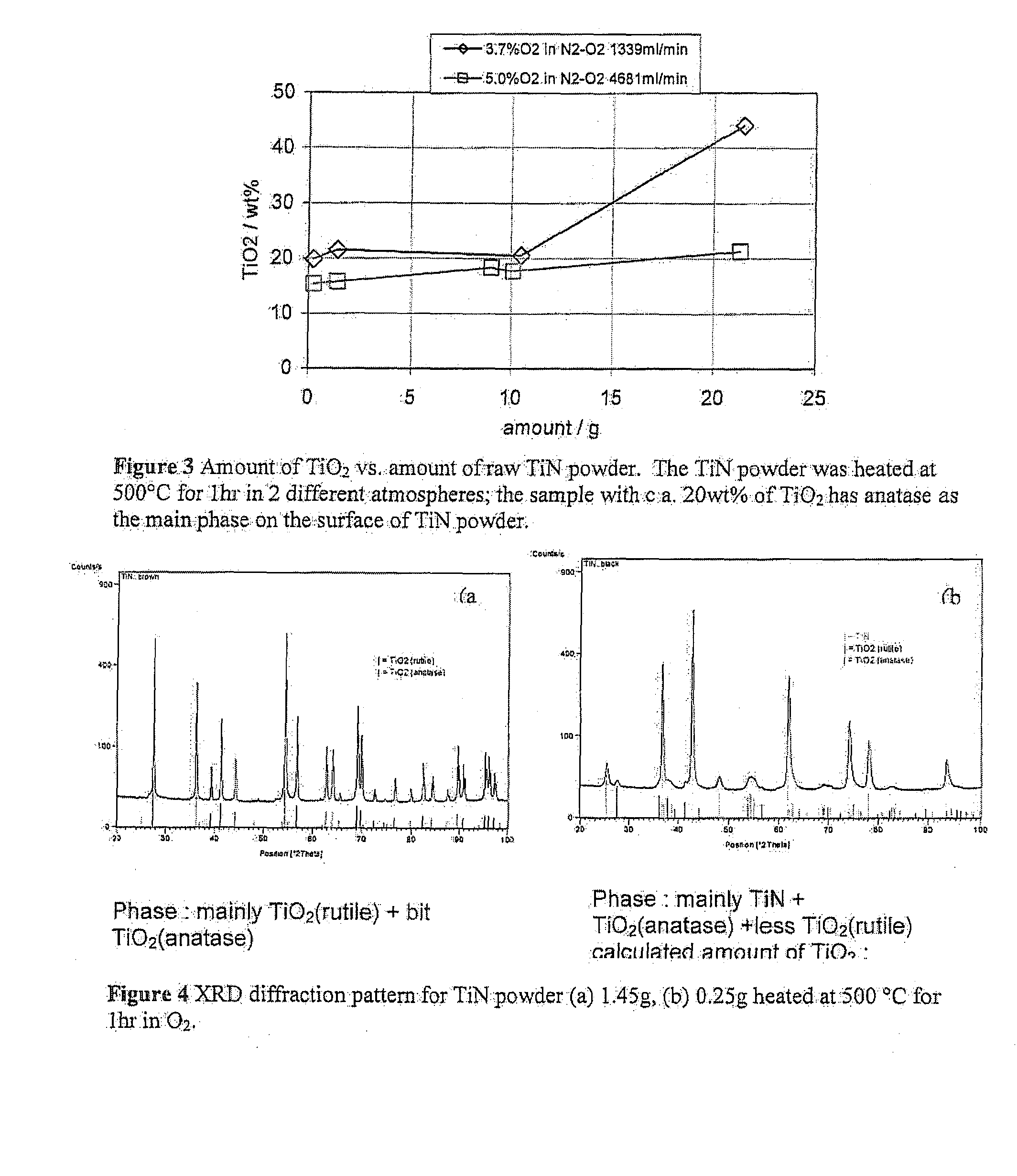Particle comprising core and shell and applications thereof
a technology of particle and core, which is applied in the field of particles comprising a core and a shell, can solve the problems of limited use, not very specific on the characteristics of particles, and tiosub>2 can only be used as a photocatalyst, etc., and achieves the effects of convenient creation of different sizes and structures, low cost and simple methods
- Summary
- Abstract
- Description
- Claims
- Application Information
AI Technical Summary
Benefits of technology
Problems solved by technology
Method used
Image
Examples
example 1
Oxidation of TiN
[0125]TiN powder was heat-treated at 400-600° C. for 1 hr in O2. Both 1.45 g and 0.25 g of TiN powder began to be oxidized at 500° C. At 600° C. TiN powder was oxidized completely and the anatase phase present was converted to the rutile phase. 500° C. is regarded as the optimum temperature in the range mentioned to obtain the maximum amount of anatase.
[0126]FIG. 1 shows the effect of O2 (%) in a mixed gas on the crystal structure of the oxidized TiN powder. Anatase was mainly formed at 4-19% of O2 for 0.25 g TiN powder and 2-6% O2 for 1.45 g TiN powder. According to FIGS. 1 and 2, the samples with about 20 wt % (e.g. 15-25 wt %) of TiO2 have anatase as a main phase on the surface of TiN powder.
[0127]FIG. 3 shows the effect of the amount of TiN powder on the amount of the TiO2 formed. The TiN powder was heated at 500° C. for 1 hr in 2 different atmospheres. 5% O2 in a mixed gas gave approximately 20 wt % oxide for 0.25, 1.45, 10 and 21 g TiN as a raw powder. The heat...
example 5
Hydrogen production using a nanostructured device comprising a photocatalyst.
[0134]A simple way is to make a porous structure using a TiN core-TiO2 shell powder according to the invention on a Pt deposited substrate (FIG. 10). However, it is noted that this method may have a difficulty to have enough water to reaching the Pt surface. In order to solve this problem, one possibility is a nanostructured beam comprising a TiN core-TiO2 shell powder with cavity. FIG. 11 shows two different types of meander-comb structures. The structure 1 is composed with a beam of layered catalyst supported by an insulation layer on a substrate. The layered catalyst is made of TiO2 as a top photoactive layer, either directly on Pt, or with a dye-sensitizer between TiO2 and Pt. Here Pt functions as a co-catalyst reduction agent to enhance hydrogen formation from water. TiO2 acts as a photocatalyst under UV light region only, whereas a dye-sensitizer extends light absorption towards the visible light regi...
example 7
[0141]It is noted that in a future solar cell many nanoparticles, with an average distance from each other between 100 nanometer and several micrometer, will be used. Also nanoparticles with different diameters, or with a non-spherical shape, are used. In the latter case also larger particles, with sharp corners or with surface roughness, are used. A general description of the manufacturing process of TiN / TiO2 powders can be found above.
Graetzel cell
[0142]The advantage of using a Graetzel cell geometry (see FIG. 14) is that no expensive high quality semiconductor is used. This results in a very simple and cost-effective device for producing electrical energy. Due to the high absorption rate already one layer of nanoparticles on the transparent electrode is enough resulting, in an extremely thin and simple geometry. The redox mediator is needed for positive charge transfer, from the nanoparticle to the counterelectrode. A very thin film of Platinum, to catalyze the reductio...
PUM
| Property | Measurement | Unit |
|---|---|---|
| thickness | aaaaa | aaaaa |
| size | aaaaa | aaaaa |
| thickness | aaaaa | aaaaa |
Abstract
Description
Claims
Application Information
 Login to View More
Login to View More - R&D
- Intellectual Property
- Life Sciences
- Materials
- Tech Scout
- Unparalleled Data Quality
- Higher Quality Content
- 60% Fewer Hallucinations
Browse by: Latest US Patents, China's latest patents, Technical Efficacy Thesaurus, Application Domain, Technology Topic, Popular Technical Reports.
© 2025 PatSnap. All rights reserved.Legal|Privacy policy|Modern Slavery Act Transparency Statement|Sitemap|About US| Contact US: help@patsnap.com



